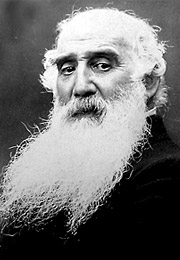


Oil on canvas
45.7 x 55.2 cm. (18 x 21 3/4 in.)
frame: 61 x 71.1 x 8.3 cm. (24 x 28 x 3 1/4 in.)
L.1988.62.15
Signed and dated upper right: C. Pissarro. 1872
[Durand-Ruel, Paris, acquired from the artist 26 Nov. 1872]; sold to Erwin Davis, New York, 2 May 1888; [sold to Durand-Ruel, New York, 7 Jan. 1889; sold to Miss A. Stone, New York, 8 Feb. 1906. Mrs. Dorothy G. Noyes, New York. Mrs. William R. Driver, Jr., South Needham, Mass., by 29 May 1964. Mrs. Willard F. Midgette, by 1967; sold at auction by Thomas Midgette (possible heir), Parke-Bernet, New York, 13 May 1970, lot. 8; purchased at auction by Henry Pearlman; bequeathed to Mr. and Mrs. Walter Scheuer, New York, 1974.
On loan from Marge Scheuer to the Henry and Rose Pearlman Foundation
One of Pissarro’s rare still lifes, this work dates from the year after his move to Pontoise, a village north of Paris. Cézanne, who regarded Pissarro as a father figure, also moved there in 1872, and the two painters often worked side by side outdoors, experimenting with the Impressionist techniques pioneered by some of their friends. Although this still life was painted indoors, it exhibits Pissarro’s use of visible brushstrokes and the colorful cast shadows that are among the hallmarks of the Impressionist style.

Camille Pissarro (1830-1903)
Pissarro was one of the most influential Impressionist artists and an important teacher and mentor to artists such as Paul Cézanne and Paul Gauguin. He has the distinction of being the only painter in the group to exhibit at all eight Impressionist Exhibitions, held between 1874 and 1886. Pissarro advocated for a new manner of painting that rebelled against academic precepts; he was also known for his political radicalism.
Pissarro was born in St. Thomas, then part of the Danish Virgin Islands, to a French father from a Portuguese Sephardic Jewish family and a mother from the Dominican Republic. At twelve he moved to Paris, where he developed an interest in art. After a brief attempt at joining the family business in St. Thomas, in 1852 Pissarro traveled to Venezuela with the Danish artist Fritz Melbye, setting up a studio in Caracas. During this time he commenced many of the practices that would endure in his art, including direct observations of nature and an interest in depicting the life of peasants.
In 1855, Pissarro returned to Paris, where he continued his training under the influence of various innovators of landscape and realist subjects, including Camille Corot, Gustave Courbet, and Charles-François Daubigny. He worked in studios both in the city and in rural areas, where he pursued plein air painting with other young artists. By 1869, Pissarro developed a brighter palette and lighter brushwork to convey his sensations before nature, carefully controlling his compositions with a dense sense of structure. Together with friends, including Claude Monet and Edgar Degas, Pissarro helped organize the First Impressionist Exhibition, providing a new, independent forum for artists outside of the Salon system. In later works, Pissarro expanded on his Impressionist vocabulary by experimenting with pointillist techniques, situating him again at the avant-garde of the Neo-Impressionists. His commitment to radical political causes continued to grow in later life, and he supplied illustrations for an anarchist journal.